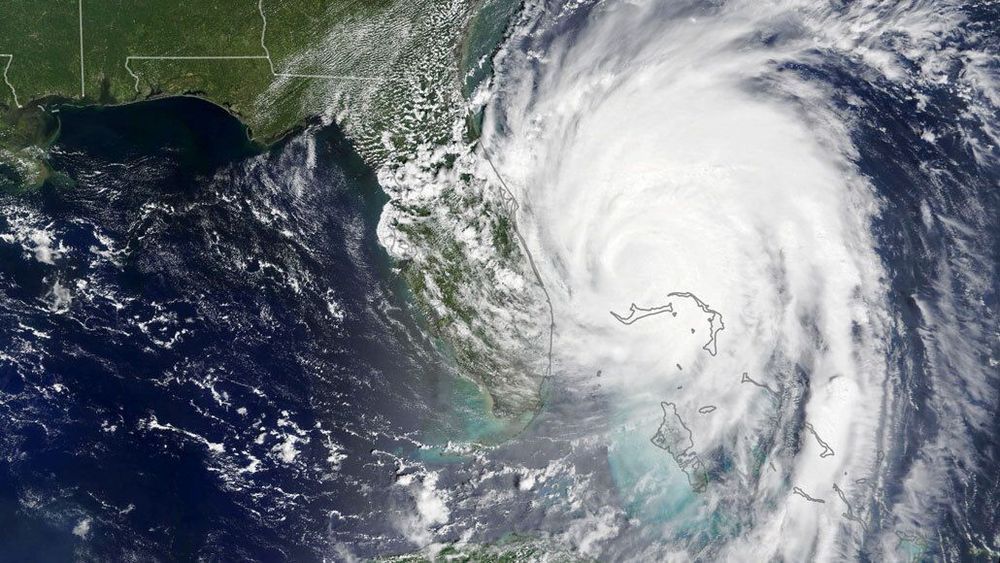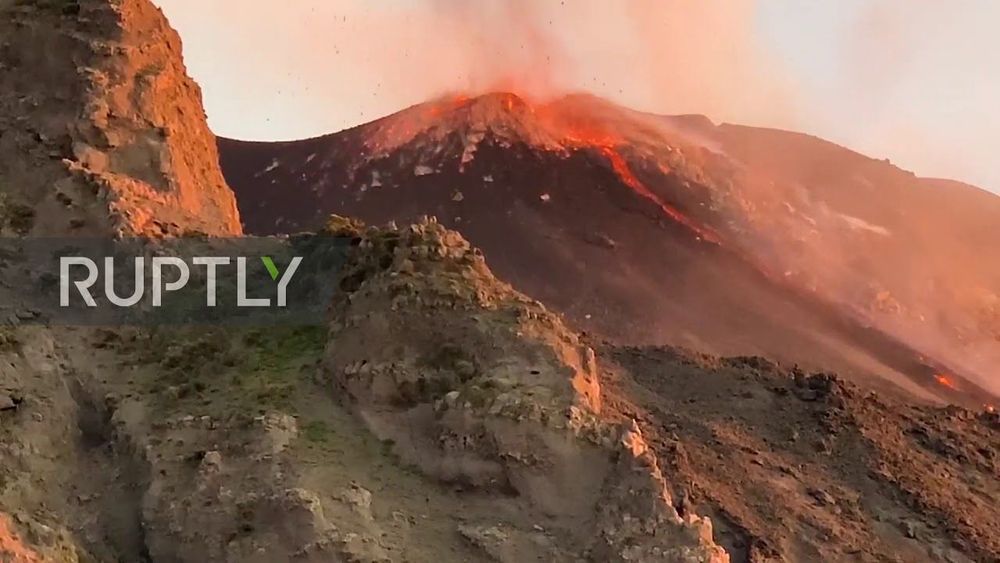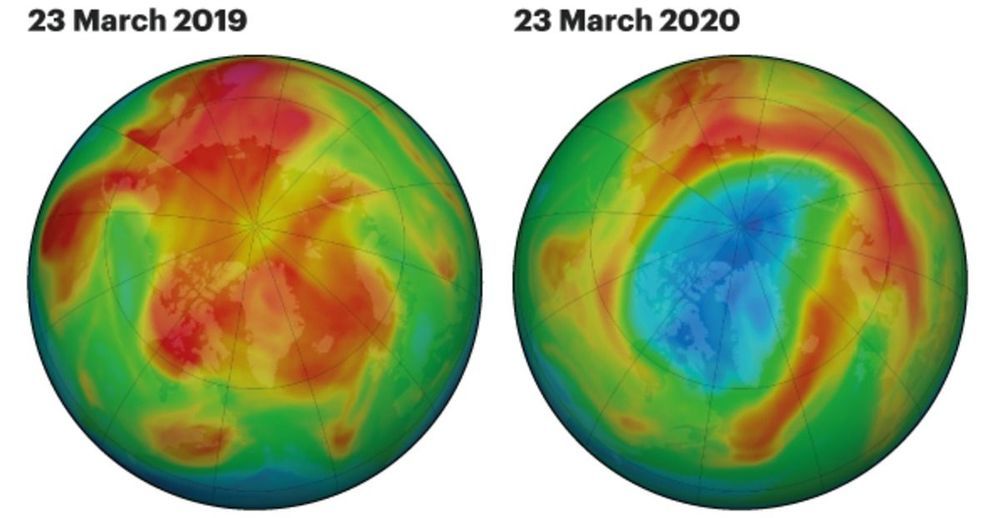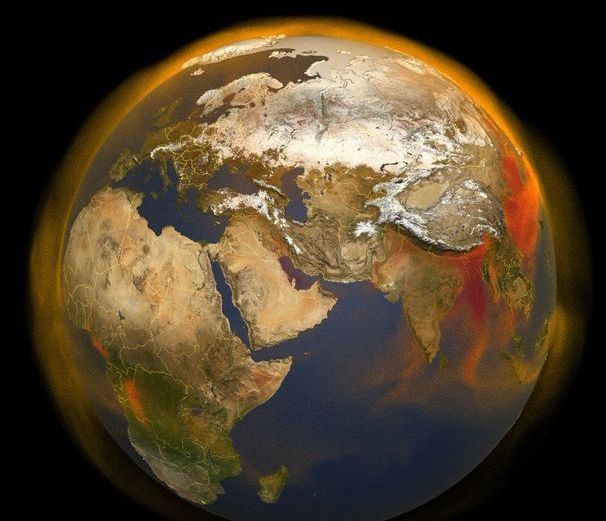Warmer ocean temperatures could fuel a very active Atlantic hurricane season, with one forecast predicting 18 named storms, including nine hurricanes.
Category: climatology – Page 118
👽Stromboli has just erupted again for the second time this month. There has been 8000 earthquakes since January 2020 in Iceland, coinciding with a volcano network that has not been awake for 800 years.
There has been 250 small Earthquakes in Idaho, and the most recent relatively strong quake worldwide was registered in Honduras, over 6,3 magnitude, yesterday.
Fyodor, R.
This is possibly part of the reasons there flocks of giant locusts ravaging Africa. Rainy periods of time like the March Rain may serve to catalyse their reproduction and they appear right when its time to harvest crops June and July, when farmers are just starting to harvest.
(Kenya, Somalia, and southern Ethiopia have the right conditions with the possibility of migrations to Uganda and South Sudan.)
Every few years, natural swings in the ocean can lead to such a warming, drastically altering weather on land—and setting the stage for flooding rains in East Africa. But at the same time, a second ocean shift was brewing. An unusually cold pool of water threatened to park itself south of Madagascar, leading to equally extreme, but opposite, weather farther south on the continent: drought.
Researchers have harnessed climate patterns to forecast famines months in advance.
Scientists have studied this ebb and flow for centuries, but only began understanding its effects on our planet at the dawn of the space age in the mid-20th century. Now it is clear that around solar maximum the sun is more likely to bombard Earth with charged particles that damage satellites and power grids. The solar cycle also plays a minor role in climate, as variations in irradiance can cause slight changes in average sea-surface temperatures and precipitation patterns. Thus, a better understanding of the cycle’s physical drivers is important for sustainable living on Earth.
Yet scientists still lack a model that perfectly predicts the cycle’s key details, such as the exact duration and strength of each phase. “I think the solar cycle is so stable and clear that there is something fundamental that we are missing,” says Ofer Cohen, a solar physicist at the University of Massachusetts Lowell. One obstacle to figuring it out, he says, is that crucial details of the apparent mechanisms behind the cycle—such as the sun’s magnetic field—are largely hidden from our view. But that might be about to change.
Tim Linden, an astronomer at The Ohio State University, and his colleagues recently mapped how the sun’s high-energy glow dances across its face over time. They found a potential link between these high-energy emissions, the sun’s fluctuating magnetic field and the timing of the solar cycle. This, many experts argue, could open a new window into the inner workings of our nearest, most familiar star.
See mushrooms are not of this earth o.o
Japanese researchers are closing in on understanding why electrical storms have a positive influence on the growth of some fungi. In a series of experiments, Koichi Takaki at Iwate University and colleagues showed that artificial lightning strikes do not have to directly strike shiitake mushroom cultivation beds to promote growth. Now they are developing technology to use electric stimulation in the production of the mushrooms, which are popular in many east Asian cuisines.
Bizarre as it may seem, atmospheric electricity has long been known to boost the growth of living things, including plants, insects and rats. In 1775, the priest and physicist Giovanni Battista Beccaria of the University of Turin reported, “it appears manifest that nature makes extensive use of atmospheric electricity for promoting vegetation”.
David Graves at the University of California at Berkeley, an expert on plasmas in food and agriculture who was not involved in this mushroom study, said “Historically, most people who looked at it [atmospheric electricity] systematically found some effect, but it can sometimes be hard to reproduce, so it’s still not by any means fully accepted in the community and there’s little understanding of the mechanism.” However, at recent plasma conferences, Graves was favourably impressed by the results presented by Takaki.
👍hm, ok as I thought.
A hole in the ozone opens up every year above Antarctica — but scientists were surprised to find one on the other side of the planet.
Chichi-shima, Japan
Posted in climatology
TSUNAMI WARNING NEAR JAPAN, PLEASE TAG YOUR JAPANESE FRIEND O 👍👀
The Philippine Sea plate is bordered by the larger Pacific and Eurasia plates and the smaller Sunda plate. The Philippine Sea plate is unusual in that its borders are nearly all zones of plate convergence. The Pacific plate is subducted into the mantle, south of Japan, beneath the Izu-Bonin and Mariana island arcs, which extend more than 3,000 km along the eastern margin of the Philippine Sea plate. This subduction zone is characterized by rapid plate convergence and high-level seismicity extending to depths of over 600 km. In spite of this extensive zone of plate convergence, the plate interface has been associated with few great (M8.0) ‘megathrust’ earthquakes. This low seismic energy release is thought to result from weak coupling along the plate interface (Scholz and Campos, 1995). These convergent plate margins are also associated with unusual zones of back-arc extension (along with resulting seismic activity) that decouple the volcanic island arcs from the remainder of the Philippine Sea Plate (Karig et al., 1978; Klaus et al., 1992).
South of the Mariana arc, the Pacific plate is subducted beneath the Yap Islands along the Yap trench. The long zone of Pacific plate subduction at the eastern margin of the Philippine Sea Plate is responsible for the generation of the deep Izu-Bonin, Mariana, and Yap trenches as well as parallel chains of islands and volcanoes, typical of circum-pacific island arcs. Similarly, the northwestern margin of the Philippine Sea plate is subducting beneath the Eurasia plate along a convergent zone, extending from southern Honshu to the northeastern coast of Taiwan, manifested by the Ryukyu Islands and the Nansei-Shoto (Ryukyu) trench. The Ryukyu Subduction Zone is associated with a similar zone of back-arc extension, the Okinawa Trough. At Taiwan, the plate boundary is characterized by a zone of arc-continent collision, whereby the northern end of the Luzon island arc is colliding with the buoyant crust of the Eurasia continental margin offshore China.
Along its western margin, the Philippine Sea plate is associated with a zone of oblique convergence with the Sunda Plate. This highly active convergent plate boundary extends along both sides the Philippine Islands, from Luzon in the north to the Celebes Islands in the south. The tectonic setting of the Philippines is unusual in several respects: it is characterized by opposite-facing subduction systems on its east and west sides; the archipelago is cut by a major transform fault, the Philippine Fault; and the arc complex itself is marked by active volcanism, faulting, and high seismic activity. Subduction of the Philippine Sea Plate occurs at the eastern margin of the archipelago along the Philippine Trench and its northern extension, the East Luzon Trough. The East Luzon Trough is thought to be an unusual example of a subduction zone in the process of formation, as the Philippine Trench system gradually extends northward (Hamburger et al., 1983).
NASA’s new 3-dimensional portrait of methane concentrations shows the world’s second largest contributor to greenhouse warming, the diversity of sources on the ground, and the behavior of the gas as it moves through the atmosphere. Combining multiple data sets from emissions inventories, including fossil fuel, agricultural, biomass burning and biofuels, and simulations of wetland sources into a high-resolution computer model, researchers now have an additional tool for understanding this complex gas and its role in Earth’s carbon cycle, atmospheric composition, and climate system.
Since the Industrial Revolution, methane concentrations in the atmosphere have more than doubled. After carbon dioxide, methane is the second most influential greenhouse gas, responsible for 20 to 30% of Earth’s rising temperatures to date.
“There’s an urgency in understanding where the sources are coming from so that we can be better prepared to mitigate methane emissions where there are opportunities to do so,” said research scientist Ben Poulter at NASA’s Goddard Space Flight Center in Greenbelt, Maryland.

Global warming is a complex problem that is not easy to solve. While world leaders seem to be dragging their feet over the issue, Yotam Ariel, founder of Bluefield, believes he might have at least one piece of the puzzle sorted. Methane monitoring from space. By leveraging a network of microsatellites with a proprietary sensor, Bluefield plans to deliver alerts and analytics to oil and gas clients to help combat the inadvertent release of methane gas
Methane, a greenhouse gas, is leaking into the atmosphere. One might ask, “Why bother with methane, isn’t carbon dioxide the problem?” Well, according to the IPCC (https://www.ipcc.ch/), methane is 84 times more potent than carbon dioxide, which is clearly a bad thing for global warming. Methane is believed to be responsible for 25% of global warming and knowing who is emitting, when, and how much, would be a massive step towards reversing climate change. Since between 50 and 65% of total global methane emissions come from human activities, being able to identify and stop leaks is crucial to lowering greenhouse gases in our atmosphere.
Bluefield plans to specialize in methane gas detection and not try and solve all problems all at once and thereby reducing complexity. Further reduction in complexity is achieved by leveraging outside suppliers where applicable that complement the Bluefield plans. By reducing the complexity, Bluefield can focus on its core mission and specialty. Areas outside of detection such as the satellite parts, ground stations, the launch, and other services will be outsourced. This will allow Bluefield to quickly move through its development stages. Whereas it might take up to 10 years for a space agency like NASA, JAXA or ESA, to fund, design, test and launch a custom satellite, Bluefield aims to accomplish this as early as next year.
This is not normal and there is another 3000 happening right now based on lightning tracker.
More than 3,000 lightning strikes, which occurred mostly during rainstorms, were recorded in central regions of the country on August 15, according to the National Observatory of Athens.
The unusually widespread electrostatic activity was detected by the ZEUS long-range lightning detection system operated by Greece’s main meterological observatory.








